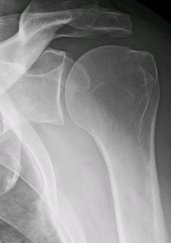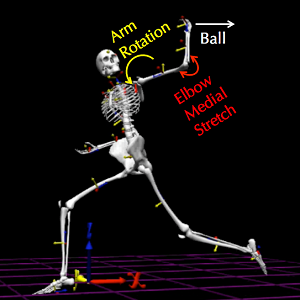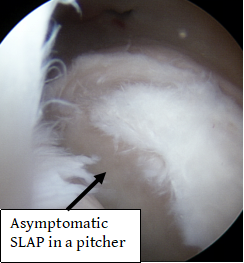Baseball & Shoulder Injuries
Anatomy and function of the shoulder

The shoulder is a ball-and-socket joint between the upper arm bone, which is called the humerus, and the shoulder blade,which is called the scapula. The ball is on the top of the upper arm bone and the socket is on the shoulder blade. However, the socket is not a full cup, it is a shallow depression similar to a golf tee. The socket is made deeper by a triangle of cartilage that runs in a circle around the socket, called the labrum. The labrum acts similar to a grommet. By deepening the socket, the labrum helps to prevent the ball from slipping over the edge of the shallow socket and dislocating.
In addition, the rotator cuff also prevents the ball from slipping over the edge of the shallow socket and dislocating by compressing the ball into the socket. The rotator cuff is a group of four muscles and tendons (the supraspinatus, the infraspinatus, the subscapularis, and the teres minor) that surrounds the ball like a glove. When the ball is compressed into the socket, the shoulder joint is a stable rotational fulcrum. This stable rotational fulcrum allows the arm to lift heavy weights above shoulder and head level.
Baseball Pitching

The overhand baseball pitch is among the fastest and highest stress athletic motions known. Most of the speed of the baseball pitch is produced in the legs and trunk. This speed is then transferred into the arm as the arm is cocked. The arm then rotates and accelerates and the ball is released. During this cocking process, the shoulder is pushed to the edge of its range of motion. At this point, it experiences extreme rotational torques and forces. The stress of pitching is so great that it causes the bones of the upper arm to become thicker and better able to resist rotational stress. Because this is a highstress activity, shoulder and elbow pain and injuries are common in pitchers.
Common Injuries

The most common pitching-related shoulder injuries include labral tears, rotator cuff tears, and bursitis. However, not all tears create symptoms. Studies have shown that labral tears and rotator cuff tears are common in professional baseball pitchers. Oftentimes these athlete’s do not have shoulder pain and are playing without limitations. What can be labeled as a “tear” on an MRI can be a normal adaptation within the shoulder to the stress of pitching. Thus not all tears diagnosed within the shoulder of pitchers require a surgical repair for a successful return to play.
In baseball pitchers with open growth plates the most common cause of shoulder pain is Little Leaguer’s shoulder. This condition is an injury to the upper arm bone growth plate. This injury always heals without surgery but requires an extended period of rest (1.5-6 months) from all activity. This injury is similar to having a broken arm bone.
Treatment

Dr. Chalmers almost always recommends that shoulder pain in baseball players is treated with rest and physical therapy to focus on restoring flexibility, strength, and coordination within the muscles of the hips, core, and shoulder blade. To be successful, this treatment should be performed with a therapist experienced in treating overhead throwers and requires diligence and patience. If performed correctly, this treatment usually results in a full-painless-return.

Dr. Chalmers rarely recommends surgery for Baseball-related shoulder injuries. Many studies have shown that returning to pitching can be very challenging after shoulder surgery. Surgery is reserved as the very last resort. The most common surgical procedures performed in baseball players include labral repair and debridement of inflamed and frayed tissue from the shoulder.
Click here to download the PDF.
You will need the Adobe Reader to view and print these documents 
